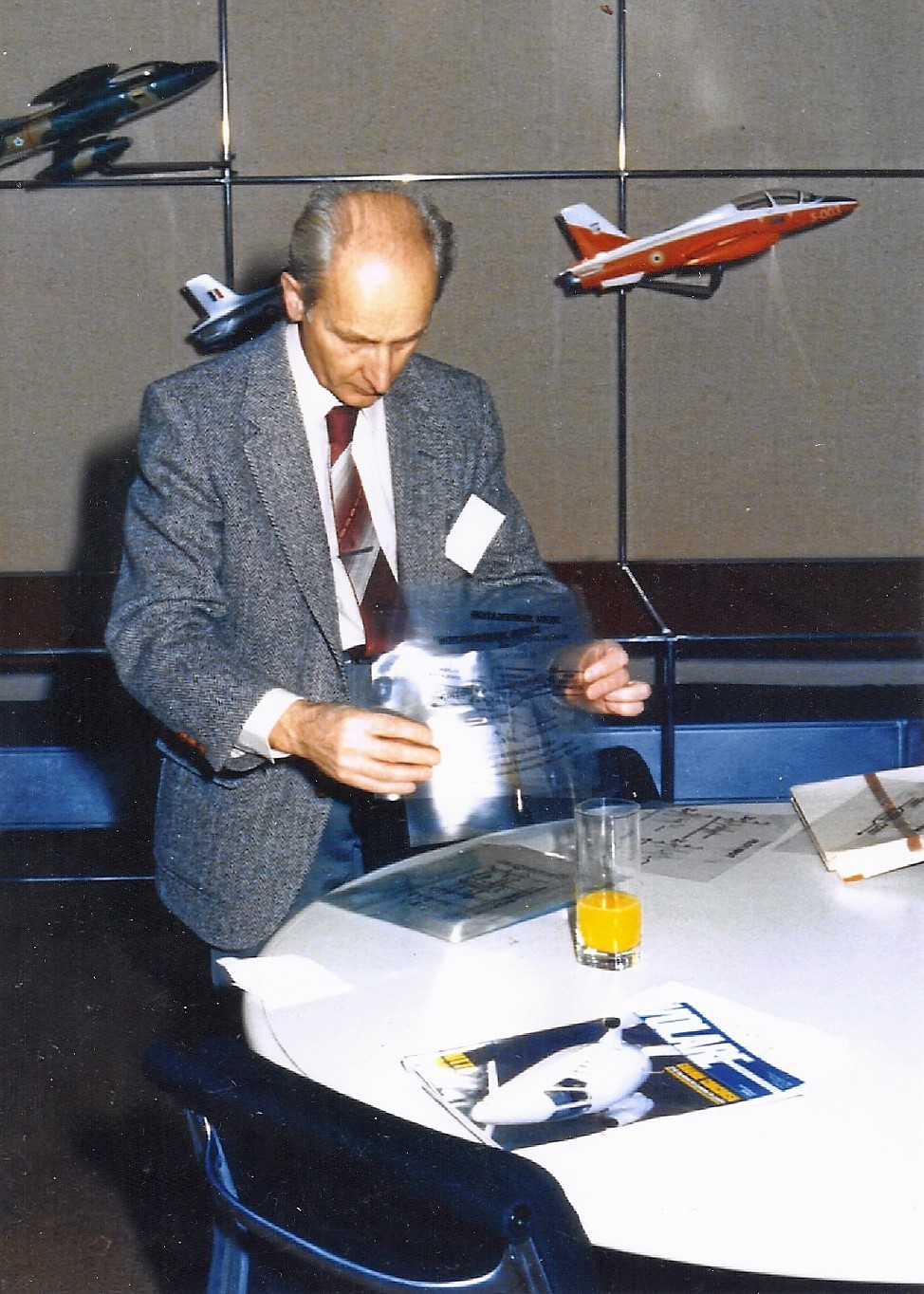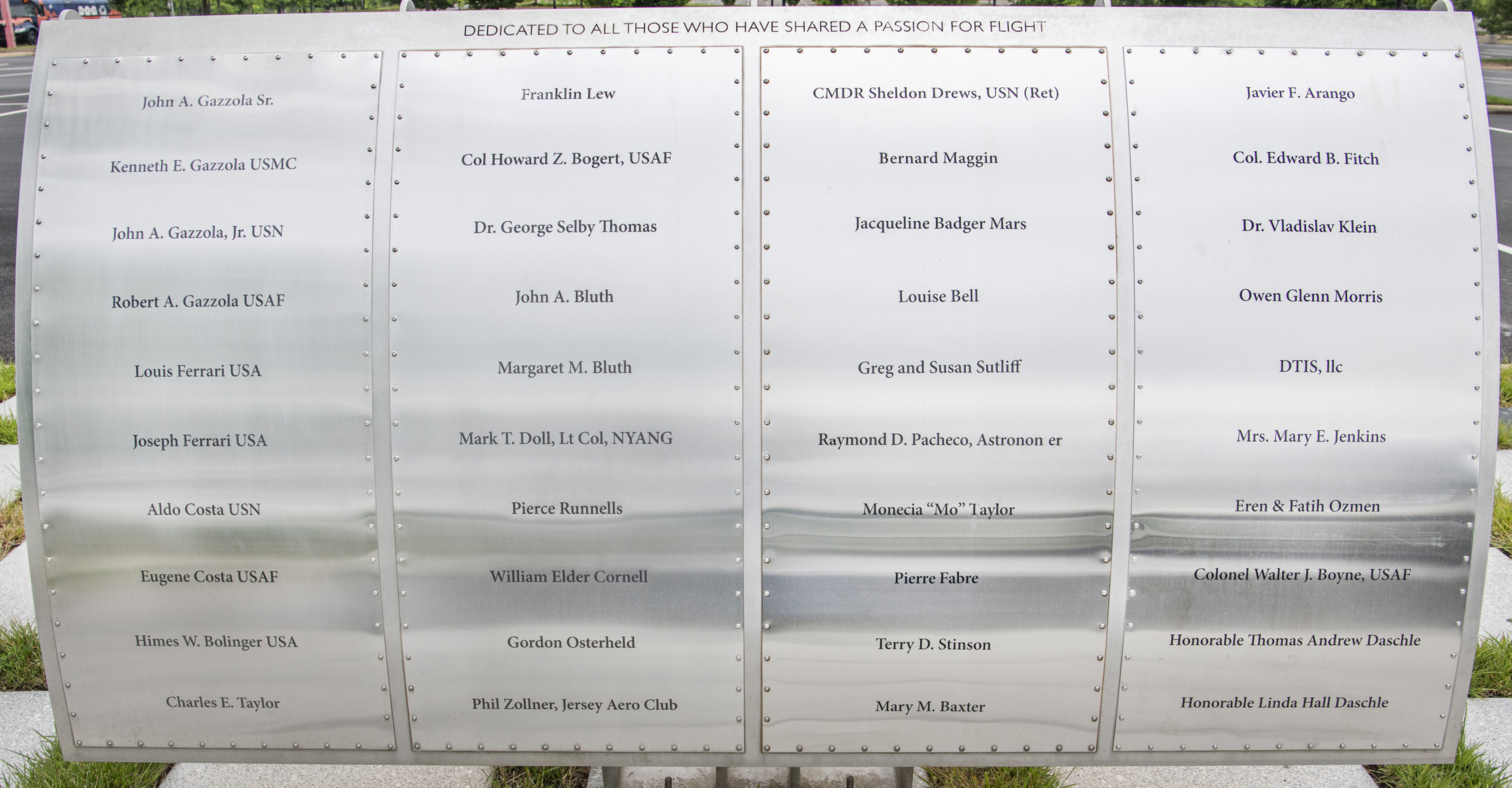
Foil: 46 Panel: 4 Column: 1 Line: 3
Wall of Honor Level: Air and Space Patron
Honored by:
Pavel Klein
Dr. Vladislav Klein
Pioneer in the field of Aircraft System Identification
1929 - 2015
Dr. Vladislav Klein spent most of his career at NASA Langley Research Center in Hampton, Virginia, where he led research in the field of Aircraft System Identification, which includes flight test and wind tunnel experiment design, flight data analysis, aerodynamic model structure determination, and aircraft dynamic modeling. He was one of the founders of modern Aircraft System Identification and made many significant technical contributions in that field. He gave lectures throughout the world, and authored many influential papers and NASA technical reports. His seminal 1978 paper entitled "Aircraft Parameter Estimation in Frequency Domain" detailed the theoretical and practical basis for nearly all frequency-domain methods currently used today. His series of papers and reports on unsteady aerodynamic modeling explained the theoretical connections among various approaches and provided practical experimental and analytical methods for identifying accurate models for this complex and important problem. Other key contributions were the application of stepwise regression and splines to model aircraft aerodynamics at high angles of attack, flight instrumentation error checking and correction methods, development and evaluation of methods for determining an adequate mathematical model structure, data partitioning for nonlinear aerodynamic modeling, practical methods for addressing near-linear dependencies among modeling terms (known as data collinearity), experiment design for highly-augmented aircraft, and the development of a practical method for computing accurate error measures for models identified from flight data. His modeling research has been significant to both military aircraft maneuverability and civilian aircraft safety. Dr. Klein successfully advocated the idea of the remotely-augmented vehicle on the highly-augmented, highly-unstable X-29 forward-swept wing aircraft. The concept was also applied to create the On-Board Excitation System (OBES) for the F-18 High-Alpha Research Vehicle (HARV), one of the first high-alpha thrust-vectored aircraft. This capability allowed automatic and optimal inputs to be applied to the aircraft, producing significantly more informative data for modeling aircraft with high-gain feedback control. Dr. Klein addressed the problem of data collinearity during X-29 flight tests, providing clearer methods to address the problem in flight test and data analysis. These developments were crucial to identifying good dynamic models for highly-augmented fighter aircraft, based on flight data. Dr. Klein also co-authored a textbook, with Dr. Gene Morelli, entitled Aircraft System Identification: Theory and Practice, which provides a comprehensive discussion of aircraft system identification theory and practice, along with practical insights from years of experience, and a well-developed software package called SIDPAC that is currently in use at more than 90 organizations throughout the world.
Vladislav Klein was born in Brezolupy, Czechoslovakia, in 1929. In October, 1949, he was accepted to the Faculty of Mechanical Engineering in Brno. After graduating he became a researcher at the Aeronautical Research and Test Institute, in Letnany, Prague, where he received his first PhD in 1962.
After the Soviet invasion of Czechoslovakia in 1968, he left for England, where he served on the aeronautical engineering faculty at Cranfield Institute of Technology, where he obtained his second PhD in 1974. The following year he joined the faculty of George Washington University, and spent the remainder of his professional career conducting aeronautical research and teaching Aircraft Flight Mechanics and Aircraft System Identification to graduate students at NASA Langley Research Center in Hampton, Virginia. He retired from full-time work in 1999, but continued his work at NASA part-time. He passed away on July 15, 2015, and is survived by his wife of 59 years, Jarmila, and son, Pavel.
Dr. Klein received many awards for his work on NASA flight test projects, such as the X-29 forward-swept wing aircraft, X-31 high-maneuverability demonstrator, F-18 HARV, F-16XL delta wing, and many others. He received the NASA Medal for Exceptional Engineering Achievement in 1992 for his innovative development of advanced techniques in the field of aircraft system identification.
Dr. Klein was an associate fellow of the AIAA, and a US representative to the International Program Committee of the International Federation of Automatic Control (IFAC). He was a key organizer and chairman of special sessions for the IFAC 7th-11th Symposia on Identification and Parameter Estimation in York (UK), Beijing (China), Budapest (Hungary), Copenhagen (Denmark), and Kitakyushu (Japan). He gave invited lectures in the People's Republic of China (1983, 1988, 2000), the Soviet Union (1991, 1992, 1993, 1997), Oxford University, UK, (1986, 1997), and other places around the world. In 1992, he was a technical consultant to Great Britain and Germany at the request of the NATO Advisory Group for Aerospace Research and Development (AGARD).
Perhaps most important of all, Dr. Klein was a teacher, mentor, and thesis advisor to numerous graduate students in aerospace engineering, many of whom now hold positions of technical leadership at NASA and elsewhere in government, industry, and academia. Many techniques that Dr. Klein developed and advocated are in widespread practice in the field today. His influence, particularly on colleagues at NASA Langley, is difficult to overstate. He was a brilliant engineer, researcher, teacher, and mentor. He was also a soft-spoken gentleman and family man who loved classical music and was always kind and polite to anyone who had the good fortune to meet him.
My sincere thanks to Dr. Gene Morelli for Dr. Klein's autobiography and kind words.
Pavel Klein
Wall of Honor profiles are provided by the honoree or the donor who added their name to the Wall of Honor. The Museum cannot validate all facts contained in the profiles.
Foil: 46
